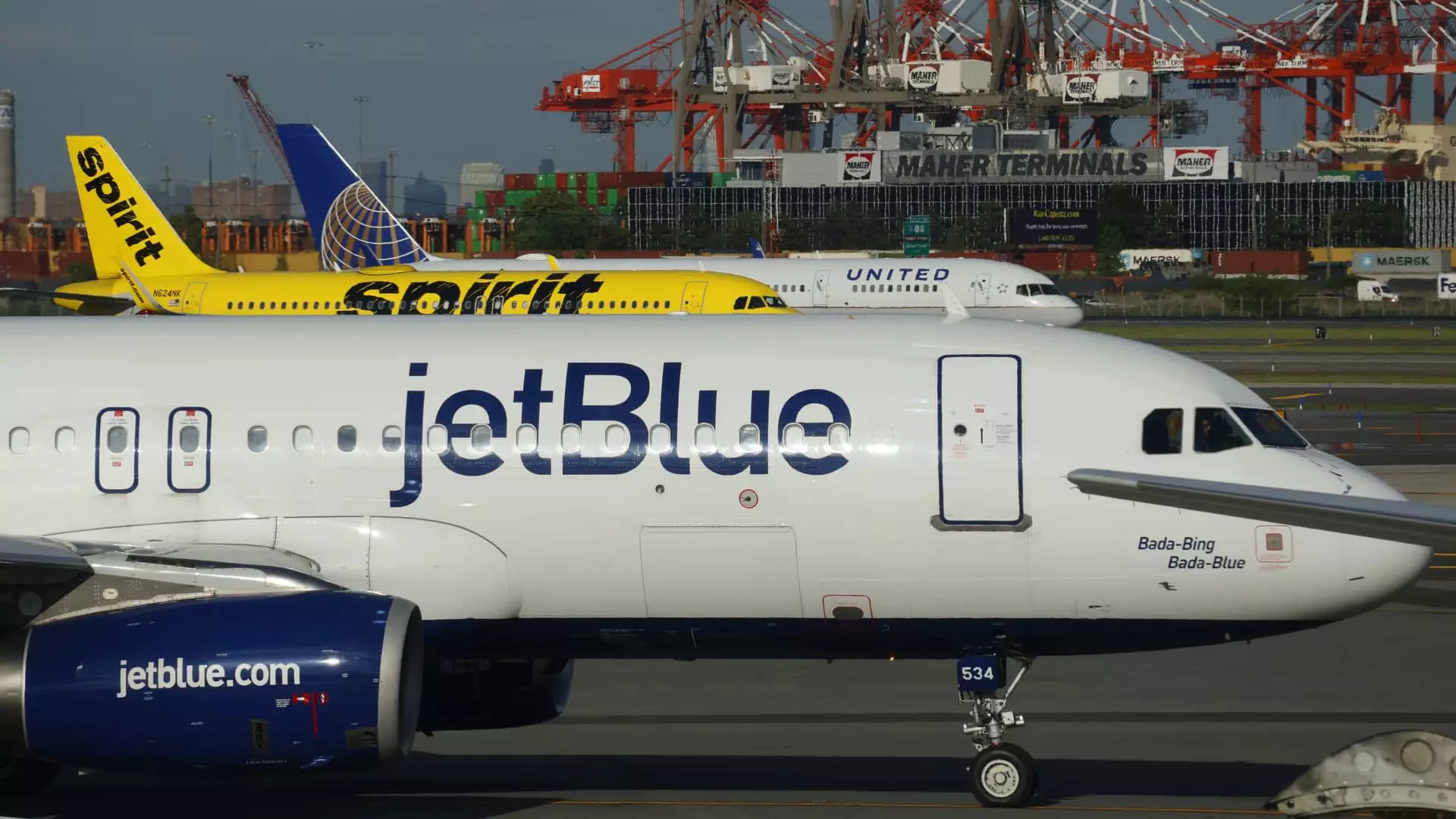The Shifting Landscape of Low-Cost Airlines: Deferral, Demand, and Debt

The airline industry has long been a barometer of consumer sentiment and economic health. For years, airlines pursued aggressive expansion, particularly among low-cost carriers (LCCs) that prided themselves on affordability. However, with the landscape shifting towards economic constraints, many of these same airlines are now delaying ambitious expansion plans and re-evaluating their financial strategies. This reconsideration is not merely a reaction to fluctuating supply and demand but is compounded by rising operational costs and significant external challenges that have emerged in recent years.
Currently, U.S. low-cost airlines like Spirit, JetBlue, and Frontier are grappling with the realities of reduced profitability. These airlines, which last posted profits in 2019, are now facing an uphill battle as airfare prices have fallen significantly and demand pressures have mounted. Fare tracker Hopper reported a noticeable drop in average ticket prices, signaling the hyper-competitive environment where low-cost carriers thrive. With operational costs on the upswing and revenues dropping, these airlines find themselves in a precarious position.
For example, front-line airlines like Frontier pointedly address that the abundance of flights in the U.S. has contributed to an oversupply situation. Taking a proactive approach, Frontier CEO Barry Biffle expressed the need for the industry to align supply with actual demand. With revenue growth stunted despite carrying more passengers, it becomes glaringly evident that strategies need recalibration.
Deferring Aircraft Deliveries as a Financial Strategy
One of the most stark shifts for these airlines is the decision to defer aircraft deliveries. The bulk of payments for new planes are due upon delivery, making it an immediately costly commitment. Many airlines, under financial duress or facing operational setbacks due to engine recalls, have chosen to delay these expensive transactions to preserve cash flow. JetBlue expects to save around $3 billion by pushing back the delivery of 44 Airbus A321 airplanes, further highlighting the necessity to reduce costs in this unpredictable market.
This deferral approach presents a “double-edged sword.” As JetBlue’s CEO Joanna Geraghty aptly noted, while the deferral aids in reducing immediate financial burdens, the need for growth and an expanding fleet remains critical. The intricate balance between growing operational capacity while assuring liquidity is a truly challenging predicament. Airlines must carefully navigate these waters, weighing the costs of idle aircraft against the imperative of expansion.
Further complicating matters, many carriers are currently facing grounded jets due to engine recalls by manufacturers such as Pratt & Whitney. Such issues exacerbate the supply constraints and make it even more challenging for airlines to plan strategically. For low-cost airlines already struggling with profitability, unanticipated groundings are particularly damaging, reinforcing their need to delay new aircraft orders and reconsider operational elasticity.
Spirit Airlines, for instance, reported significant financial losses alongside plans to furlough pilots due to dwindling revenue stemming from these operational challenges. The decision to defer all orders for Airbus planes until at least 2030 is a testament to how deeply these issues are affecting the industry and the extreme measures that must be taken to stabilize.
While lower-cost carriers have voiced concerns and adjustments based on their particular financial contexts, the broader global airline industry operates in a mindset characterized by scarcity. Both Boeing and Airbus continue to grapple with workforce shortages, supply chain disruption, and rising material costs. This scarcity directly impacts aircraft availability and pricing, leading to increases in lease rates and the high cost of ownership for new planes.
While LCCs pull back from growth, major aerospace manufacturers report unfilled orders numbering in the thousands, providing an interesting juxtaposition between the dire financial realities of budget airlines and the ongoing demand for new aircraft. The equilibrium of supply and demand within the industry remains a delicate balancing act as carriers seek financial viability while managing their operational capabilities.
The flight path of low-cost carriers is far from straightforward. As they navigate a complex web of economic pressures, soaring operational costs, and the necessity for strategic deferral of aircraft deliveries, the industry is witnessing a stark transformation. The key to survival may reside in adaptability and innovation as airlines forge new pathways toward profitability, rather than merely expanding fleets in hopes of recovering pre-pandemic growth trajectories. The future may require a significant rethinking of operational strategies, resource allocation, and growth ambitions in this fast-evolving landscape of aviation.





